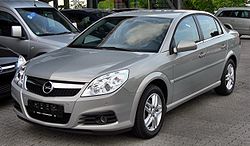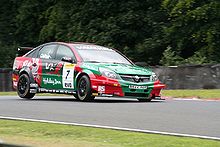- Opel Vectra
-
"Chevrolet Vectra" redirects here. For the version of the car sold in Brazil since 2009, see Opel Astra.
Opel Vectra
2005–2008 Opel Vectra C sedan.Class Large family car Manufacturer Opel Also called Chevrolet Vectra
Holden Vectra
Vauxhall Cavalier
Vauxhall VectraProduction 1988–2008 Predecessor Opel Ascona Successor Opel Insignia Layout Front-engine, front-wheel drive The Opel Vectra is a large family car that was engineered and produced by Opel. In the United Kingdom, the car was sold under the Vauxhall marque as the Vauxhall Cavalier and later as the Vauxhall Vectra, from 1995 onwards. It has also been sold by Holden in Australasia as Holden Vectra, and Chevrolet in Latin America as Chevrolet Vectra.
The Vectra was introduced in 1988 as a replacement to the Opel Ascona and itself was replaced in 2008 by the Opel Insignia, which will retain the Chevrolet Vectra name for the Latin American market.[1]
Contents
Vectra A (1988–1995)
Opel Vectra A 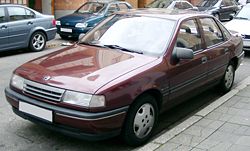
Also called Chevrolet Vectra
Vauxhall CavalierProduction 1988–1995
1993–1998 (Egypt)Assembly Luton, England
Eisenach, Germany
Rüsselsheim, Germany
São Caetano do Sul, Brazil
Caracas, Venezuela
6th of October City, Egypt[2]Body style 4-door saloon,
5-door hatchbackLayout Front-engine design
front-wheel drive (FWD) / all-wheel drive (AWD)Platform GM2900 platform Engine Petrol engines:
1.4 L I4 SOHC
1.6 L I4 SOHC
1.8 L I4 SOHC
2.0 L I4 SOHC
2.0 L I4 DOHC
2.0 L I4 DOHC Turbo
2.5 L V6 2xDOHC
Diesel engines:
1.7 L
1.7 L Isuzu TurbodieselTransmission 5-speed manual transmission (F10/5, F13/5, F16/5, F20/5)
6-speed Getrag manual
(F28/6)
4-speed automaticWheelbase 2,600 mm (102.4 in) Length 4,430 mm (174.4 in)(saloon),
4,350 mm (171.3 in) (hatch)Width 1,700 mm (66.9 in) Height 1,400 mm (55.1 in) Curb weight 997 kg (2,200 lb)–1,199 kg (2,640 lb) (4-cyl petrols) Related Opel Calibra Designer Wayne Cherry The first Vectra, known as the Vectra A, was introduced in 1988 as a saloon and hatchback, replacing the Opel Ascona C. A coupé based on the Vectra, called the Calibra, was also sold. Both cars were designed by the Opel design chief at the time, Wayne Cherry. Vauxhall Motors, the British GM subsidiary that shared most of its models with Opel, did not use the "Vectra" model name. It marketed the car as its next generation Cavalier.
Engines ranged initially from a 75 PS (55 kW) 1.4 L to a 130 PS (96 kW) 2.0 L Family II. With the introduction of Euro I emissions regulations, the base model was replaced by a 1.6 L with the same output, while the top of the line was given to a 16-valve version of the 2.0 L engine, which powered the GT (GSI) version, and had 150 PS (110 kW). Four-wheel drive versions were added to the lineup in 1990, and in 1993, the car received a limited edition turbocharged version, with 204 PS (150 kW). The 1.4-litre engine was not available in all markets, and even then, it was only available in basic trims (Base/L in United Kingdom, LS/GL in Europe). A 2.5 L V6 engine appeared towards the later stages of the Vectra's life, developing 170 PS (125 kW), turning the car into a relaxed motorway cruiser rather than give it sporty pretensions.
There were a choice of two diesel engines; one was an Isuzu 1.7 L Circle-L unit, in both naturally aspirated and turbocharged form (1686 cc), this one capable of achieving 82 PS (60 kW), and a Opel designed 1.7 "low blow" turbo-diesel (1699 cc), and naturally aspirated diesel unit, delivering up to 68 PS (50 kW; 67 hp). Both units have a reputation for longevity, especially Isuzu developed units, which were also regarded as some of the most refined diesels available at the time.[citation needed]
The front suspension was fully independent, with MacPherson struts, pressed steel lower control arms, and an anti-roll bar. The front suspension, together with the major mechanicals (engine and transmission) is remotely mounted on a front subframe. On front wheel drive models, the rear suspension is semi-independent, consisting of a torsion beam axle linked to trailing arms, with double conical coil springs and direct acting telescopic hydraulic shock absorbers, with certain models also having an anti-roll bar. On the four wheel drive GSi, the rear suspension is a subframe-mounted fully independent design, with semi-trailing arms, double conical coil springs, direct acting gas-assisted telescopic shock absorbers, and an anti-roll bar. Steering gear is a rack and pinion type (manual or power assisted, depending on model), mounted on the bulkhead (firewall), with a telescopically deformable steering column.
The Vectra also received a refresh in 1992.[3] The range received new front grilles and a black plastic strip above the rear tail lights, along with an upgrade to the structure for improved crashworthiness. Airbags became available from 1993 onward.
The Vectra gave birth to a coupé version, the Opel Calibra, which shared the Vectra's underpinnings, including the most powerful engines (115 PS and up) and transmissions.
In New Zealand, the Vectra A was offered initially as an Opel, but it wore Holden badges from 1994. It was not sold in Australia, where Holden instead offered a rebadged Toyota Camry called Apollo until 1997.
In Brazil, the Chevrolet-badged Vectra A was not introduced until 1993, when it replaced the Chevrolet Monza, a restyled version of the Ascona C.
In Egypt, the Opel Vectra A was not introduced until 1994 through GM Egypt Dealerships, and started production in late 1994 by GM Egypt through early 1996 with a range of 1.6 GL, 2.0 GL trim and 2.0 GLS trim and only Saloon body style boosting strong sales during this short run.
Common engine lineup for Vectra A
Engine Model Displ. Power Torque Fueling System Valvetrain Top speed 14NV 1389 cc 55 kW (75 PS; 74 hp) @ 5600 rpm 108 N·m (80 lb·ft) @ 3000 rpm Carburettor SOHC 176 km/h (109 mph) 16SV 1598 cc 60 kW (82 PS; 80 hp) @ 5200 rpm 130 N·m (96 lb·ft) @ 2600 rpm Carburettor SOHC 178 km/h (111 mph) C16NZ(2) 1598 cc 55 kW (75 PS; 74 hp) @ 5200 rpm 127 N·m (94 lb·ft) @ 2600 rpm SPFI SOHC 176 km/h (109 mph) E16NZ 1598 cc 55 kW (75 PS; 74 hp) @ 5200 rpm 125 N·m (92 lb·ft) @ 2600 rpm SPFI SOHC 176 km/h (109 mph) X16SZ 1598 cc 52 kW (71 PS; 70 hp) @ 5000 rpm 128 N·m (94 lb·ft) @ 2800 rpm SPFI SOHC 176 km/h (109 mph) 18SV 1796 cc 66 kW (90 PS; 89 hp) @ 5400 rpm 148 N·m (109 lb·ft) @ 2800 rpm Carburettor SOHC 183 km/h (114 mph) E18NVR 1796 cc 65 kW (88 PS; 87 hp) @ 5400 rpm 143 N·m (105 lb·ft) @ 2800 rpm Carburettor SOHC 182 km/h (113 mph) C18NZ 1796 cc 66 kW (90 PS; 89 hp) @ 5400 rpm 145 N·m (107 lb·ft) @ 3000 rpm SPFI SOHC 183 km/h (114 mph) C20NEF 1998 cc 74 kW (101 PS; 99 hp) @ 5200 rpm 158 N·m (117 lb·ft) @ 2600 rpm MPFI SOHC 20NE 1998 cc 85 kW (116 PS; 114 hp) @ 5200 rpm 175 N·m (129 lb·ft) @ 2600 rpm MPFI SOHC 198 km/h (123 mph) C20NE 1998 cc 85 kW (116 PS; 114 hp) @ 5200 rpm 170 N·m (125 lb·ft) @ 2600 rpm MPFI SOHC 198 km/h (123 mph) 20SEH 1998 cc 95 kW (129 PS; 127 hp) @ 5600 rpm 180 N·m (133 lb·ft) @ 4600 rpm MPFI SOHC 206 km/h (128 mph) 20XEJ 1998 cc 110 kW (150 PS; 148 hp) @ 6000 rpm 196 N·m (145 lb·ft) @ 4800 rpm MPFI DOHC 217 km/h (135 mph) C20XE 1998 cc 110 kW (150 PS; 148 hp) @ 6000 rpm 196 N·m (145 lb·ft) @ 4800 rpm MPFI DOHC 217 km/h (135 mph) X20XEV 1998 cc 100 kW (136 PS; 134 hp) @ 5600 rpm 185 N·m (136 lb·ft) @ 4000 rpm MPFI DOHC 210 km/h (130 mph) C20LET 1998 cc 150 kW (204 PS; 201 hp) @ 5600 rpm 280 N·m (207 lb·ft) @ 2400 rpm MPFI, Turbo DOHC 245 km/h (152 mph) C25XE 2498 cc 125 kW (170 PS; 168 hp) @ 6000 rpm 227 N·m (167 lb·ft) @ 4200 rpm MPFI DOHC 233 km/h (145 mph) 17D 1700 cc 42 kW (57 PS; 56 hp) @ 4600 rpm 105 N·m (77 lb·ft) @ 2400–2600 rpm Bosch injection pump SOHC 152 km/h (94 mph) 17DR 1700 cc 44 kW (60 PS; 59 hp) @ 4600 rpm 105 N·m (77 lb·ft) @ 2400–2600 rpm Bosch injection pump SOHC 152 km/h (94 mph) TC4EE1 1686 cc 60 kW (82 PS; 80 hp) @ 4400 rpm 168 N·m (124 lb·ft) @ 2400 rpm Bosch injection pump SOHC 176 km/h (109 mph) Vectra B (1995–2002)
Opel Vectra B 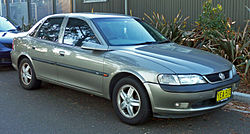
Also called Chevrolet Vectra
Holden Vectra
Vauxhall VectraProduction 1995–2002 Assembly Ellesmere Port, England, UK
Luton, England, UK
Rüsselsheim, Germany
Antwerp, Belgium
6th of October City, Egypt (1998–2002)
Elizabeth, S.A., Australia (1998–1999)
São Caetano do Sul (1996-2005), Brazil
İzmir, Turkey (1996-2002)Body style 4-door saloon,
5-door hatchback,
5-door estatePlatform GM2900 platform Wheelbase 2,640 millimetres (104 in) Length 4,480 millimetres (176 in) Width 1,710 millimetres (67 in) Height 1,420 millimetres (56 in) Curb weight 1,270 kilograms (2,800 lb)–1,325 kilograms (2,920 lb) Related Saturn L-Series The second model, the Vectra B, was introduced in 1995, and the model range included an estate version for the first time. This model replaced the Vauxhall Cavalier in the UK. The Vauxhall badged Vectra B was the last Vauxhall to be produced at the company's Luton plant, where the end of automobile production was announced at Christmas 2000, taking effect just over a year later.[4]
The model was badged as the Holden Vectra in Australia and New Zealand. In 1998, Holden began assembly of the Vectra for export to other right-hand drive markets in the region, although this was adversely affected by the Asian economic crisis, and ended in 2001.
Engines started from the 71 PS (52 kW) 1.6 L, Family 1 but eventually the 8-valve engines were all replaced by 16-valve powerplants. The 2.0 L Family II engine, with 136 PS (100 kW) was developed as a basis for touring car racing (later in Australia, 2.2 L 108 kW), but the top of the line was a 2.5 L V6 with 170 PS (125 kW). Diesel power came once again from Isuzu, but now featured direct injection and a 16-valve head.
In 1999 the Vectra was updated, receiving a mildly modified body (that can be identified by the single piece headlight units and body-coloured bumpers) together with somewhat improved handling characteristics and better equipment.
Sporting limited edition models included the touring car championship inspired i500, Super Touring and GSi. The first model was developed in Germany by Opel Motorsport, with the V6 engine's power increased to 195 PS (143 kW), and the other two were created in Milton Keynes by Motor Sport Developments, the team that run the Vectras in the British Touring Car Championship (BTCC). Only 3900 2.5 GSi models were ever produced, mostly in saloon and hatchback guise. With only 317 estate versions produced during this time, they became one of the rarest production Vauxhalls ever.
On model years 2001 and 2002 a last of the line 2.6 GSi was made also but these were limited to 500 cars. These were again mostly saloons and hatchbacks however 37 estates were made. These models received a host of extra upgrades including but not limited to Xenon headlights and larger front brakes.
In Egypt, the production of the Opel Vectra B continued in mid-1996 with two models, initially a 1.6l 8v GLS trim with manual transmission and a 2.0l 8v CD trim with automatic transmission. Later in 2000 the revised model was produced with three models 1.6 8v GLS trim with manual transmission (later replaced by the 1.6 16v GLS trim with automatic transmission), 2.0 16v CD trim with automatic transmission, and a 2.0 CDX trim automatic transmission and all with saloon body style. In 2002 local production of the Opel Vectra ceased in favour of the Opel Corsa Sedan and Opel Astra Sedan.
A related model sold in North America was the Saturn L-Series, introduced in 2000 but dropped from the lineup in 2005. It was replaced by the 2007 Saturn Aura, which was built around GM's Epsilon architecture, as the Vectra C is.
Vectra C (2002–2008)
Opel Vectra C 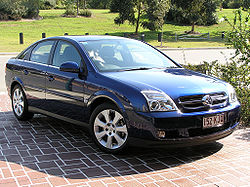
2005 Holden ZC Vectra CDX hatchback (Australia)Also called Chevrolet Vectra
Holden Vectra
Vauxhall VectraProduction March 2002–2008
2002–present (Egypt)Assembly Ellesmere Port, England
Rüsselsheim, Germany
6th of October City, EgyptBody style 4-door saloon,
5-door hatchback,
5-door estatePlatform Epsilon platform Curb weight 1,393 kilograms (3,071 lb) Related Opel Signum Built over the Epsilon platform the Opel Vectra C of 2002 was initially available as a four-door sedan and a five-door hatchback, known as the GTS.[5] A five-door station wagon was added in 2003,[6] along with an "executive hatchback" sold under the Signum nameplate. The Signum, which is based partly on the Vectra C features a completely different layout in the rear.[7]
The engine range was substantially modified to account for an increased curb weight. While a 90 kW (121 hp) 1.8 litre Family 1 Ecotec engine was reserved for the base model, a 2.0 litre turbocharged Family II engine with 129 kW (173 hp) was also offered,[8] along with a new 3.2 litre V6, with 155 kW (208 hp).[9] Diesel power, which by now was important for commercial success in Europe,[10] is provided by an Isuzu-sourced 3.0 litre V6 outputting 132 kW (177 hp),[11] but the four-cylinder diesel engine was replaced in 2004 by a Fiat-designed 1.9 litre Ecotec CDTI engine capable of outputting 110 kW (148 hp) in 16v form and 89 kW (119 hp) in 8v form.[12] Handling is reported to be much better than the old car, but reviews still criticise the overlight feel of the steering, complicated indicator switches and the rather ungainly styling of the sedan version.[citation needed]
The Vectra received a facelift near the end of 2005, retaining a similar line of engines, however the 3.0 diesel received a power increase to 137 kW (184 hp) and the petrol V6 engine was replaced by an Australian-built turbocharged 2.8 litre High Feature V6 unit. This Saab co-developed motor could produce 170 kW (228 hp) for the facelifted Vectra. Opel installed the twin scroll turbo engine in its Signum productline with 185 kW (248 hp) output. The 185 kW (248 hp) version was available for Vectra later in 2006. Opel also introduced - for the first time - an OPC version of the Vectra, using the VXR name in the United Kingdom. These high-performance variants were available only in the hatchback and station wagon bodies. In the United Kingdom the power on the High Feature V6 engine was increased to 188 kW (252 hp), and maximum speed just falls short of 250 km/h (155 mph). In Australia and New Zealand, the Holden Vectra ZC series was dropped and replaced with the Holden Epica, a badge-engineered Daewoo Tosca in 2007.[13] Due to stockpiling of 2005 model Vectras for the Australasian market, there was enough supply of the car for deliveries to last through to 2007, as a result facelifted Vectra Cs were not sold in those markets.[14] In 2008, Vectra OPC was available with either 6 speed manual or 6 speed automatic transmission (Previous Vectra OPC had manual gearbox only). The 2.8L DOHC V6 turbo engine could generate 206 kW (276 hp).
Sales of the Vectra in the United Kingdom have not been as strong as its predecessors. For much of its production life, the original Vectra was the fourth best selling car in the country, yet the Vectra C has never come higher than tenth in the country's car sales charts, though it is still the second best selling car in its sector behind the Ford Mondeo. In 2007, it finally made the top 10 of Britain's car sales charts, being the nation's tenth most popular new car with over 50,000 sales, outselling the Ford Mondeo for the first time since 1999.[15] Also in 2007, the station wagon variant garnered the Estate Car of the Year 2007 award by What Car? magazine.[16]
While the Vectra C has been sold in Mexico and Chile as the Chevrolet Vectra, it is not marketed in Brazil, where Chevrolet opted to sell the Astra C under the Vectra brand since October 2005, keeping the Astra B as the cheaper option. Both local-spec cars are powered by the FlexPower SOHC engine originally introduced in 1982 in the Chevrolet Monza.
Motorsport
The Vectra was used in several touring car racing series. In the 1990s and early 2000s, the Vectra B Super Touring took part in the British Touring Car Championship, the Asia-Pacific Touring Car Championship, the German Super Tourenwagen Cup, the Australian Super Touring Championship and the Swedish Touring Car Championship. Uwe Alzen was third in Super Tourenwagen Cup in 1997 and 1998 and second in 1999; John Henederson was runner-up in the 2000/2001 Australian Super Touring Championship; John Cleland was British Touring Car Champion in 1995 and finished third in 1992 and fourth in 1993 and 1994; Yvan Muller was sixth in the 1999 British Touring Car Championship and fourth in 2000; and Nicklas Karlsson was third in the 2002 Swedish Touring Car Championship.
After being replaced by the Astra C in the British Touring Car Championship, the Vauxhall Vectra was introduced in 2007. Fabrizio Giovanardi was champion in 2007 and 2008. VX Racing is competing in the 2009 season with three Vectras, driven by Giovanardi, Matt Neal and Andrew Jordan.
The Vectra has been used as a silhouette racing car: in the Stock Car Brasil in 2000 to 2003 (it was champion the four seasons) and 2009, in the Argentine Top Race V6 since 2005 (Guillermo Ortelli was 2005 champion), and in the Deutsche Tourenwagen Masters in 2004 and 2005 with little success.
References
- ^ "Multiplicación de novedades". El Mercurio. 2008-20-18. http://diario.elmercurio.cl/detalle/index.asp?id={46052f3d-89ec-410f-9c5d-e0f1fdf4f79f}. Retrieved 2008-11-04. (Spanish)
- ^ Satyam. "Welcome to GMArabia.com". Gmegypt.com. http://www.gmegypt.com/content_data/LAAM/ME/en/GBPME/999/EG/gm_history.html?cntryCd=EG. Retrieved 2010-10-02.
- ^ Aucock, Richard (August 2006). "Vauxhall Vectra". Auto Express. Dennis Publishing. http://www.autoexpress.co.uk/carreviews/usedcartests/202257/vauxhall_vectra.html. Retrieved 2009-03-14.
- ^ "The loss of Luton". Car Magazine: page 13. date February 2001.
- ^ "New Holden Vectra goes up-market". WebWombat. http://www.webwombat.com.au/motoring/news_reports/2_02_hol.htm. Retrieved 2008-01-07.
- ^ "Vauxhall Vectra Estate (2003 - To Date)". Yahoo!. http://uk.cars.yahoo.com/car-reviews/car-and-driving/vauxhall-vectra-estate-2004223.html. Retrieved 2008-01-07.
- ^ "Opel Vectra and Signum Facelifts". Automotriz. Archived from the original on 2008-03-06. http://web.archive.org/web/20080306052333/http://www.automotriz.net/english/cars/opel-signum.htm. Retrieved 2008-01-07.
- ^ "New Opel Signum: Versatile, Innovative, Unique". Black Falcon Media Group Oy. http://www.worldcarfans.com/2050615.001. Retrieved 2008-01-07.
- ^ "Opel Vectra GTS". Babez.de. http://www.babez.de/opel/gts.php. Retrieved 2008-01-07.
- ^ Christine, Tierney; Weich, David (2003-05-03). "The Smell of Diesel Is Back in the Air". McGraw-Hill. http://www.businessweek.com/magazine/content/03_19/b3832079.htm. Retrieved 2008-01-07.
- ^ Wan, Mark (2003-05-24). "Opel Vectra". AutoZine. Archived from the original on 2008-01-06. http://web.archive.org/web/20080106161813/http://www.autozine.org/html/Opel/Vectra.html. Retrieved 2008-01-10.
- ^ "Vauxhall Vectra CDTI 150". Khoo Systems. 2004-10-17. http://www.honestjohn.co.uk/road_tests/?id=151. Retrieved 2008-01-10.
- ^ Newton, Bruce (June 2007). "Sneer Miss". Wheels: 104–108.
- ^ Yan, Jack (2007-05-26). "Holden Epica arrives in New Zealand (God help us)". Jack Yan & Associates. http://www.jackyan.com/blog/2007/05/holden-epica-arrives-in-new-zealand-god.html. Retrieved 2008-04-29.
- ^ Finlay, David (2008-01-08). "UK Motor Industry 2007". PDRonline. http://www.carkeys.co.uk/features/industry/2008/14456.asp. Retrieved 2008-01-10.
- ^ "Car of the Year 2007 - Estate car". What Car?. 2007-01-19. http://www.whatcar.co.uk/news-special-report.aspx?NA=223730&EL=3187889. Retrieved 2008-01-10.
External links
« previous — Opel road car timeline, 1980s–present Type 1980s 1990s 2000s 2010s 0 1 2 3 4 5 6 7 8 9 0 1 2 3 4 5 6 7 8 9 0 1 2 3 4 5 6 7 8 9 0 City car Agila A Agila B Supermini Corsa A Corsa B Corsa C Corsa D Compact car Kadett C Kadett D Kadett E Astra F Astra G Astra H Astra J Large family car Ascona B Ascona C Vectra A Vectra B Vectra C Insignia Signum Executive car Rekord E/ Commodore C Omega A Omega B Luxury car Senator A/ Monza Senator B Sports car Tigra Tigra TwinTop Manta B Calibra Speedster GT Mini MPV Meriva A Meriva B Compact MPV Zafira A Zafira B Large MPV Sintra SUV Frontera A Frontera B Antara Monterey LCVs Combo B Combo C Arena Vivaro Movano Movano Opel Current Opel
passenger carsCurrent Opel
commercial vehiclesHistoric and
discontinued modelsAdmiral • Arena • Ascona • Bedford Blitz • Blitz • Calibra • Campo • Chevette • Commodore • Diplomat • 5/12 PS "Puppchen" • 4/8 PS "Doktorwagen" • Frontera • GT • Kadett • Kapitän • Laubfrosch • Manta • Monterey • Monza • Olympia • Omega • Patentmotorwagen „System Lutzmann“ • P4 • RAK • RAK1 • RAK2 • Regent • Rekord • Senator • Signum • Sintra • Speedster • Super 6 • Tigra • 10/30 (10/35) PS • 12,3-Liter-Rennwagen • VectraMotor racing cars Concept cars Divisions and
subsidiariesOpel Eisenach GmbH • Opel Motoren Kaiserslautern GmbH • Opel Powertrain GmbH • Opel Performance Center GmbH • Opel Special Vehicles GmbHOther Founder: Adam Opel • Opel International Category ·
Category ·  Commons
CommonsVauxhall Motors A subsidiary of General Motors Passenger cars CurrentPast10-4 (1937–1947) · 12-4 (1937–1946) · 14-6 (1939–1948) · 14 and 14/40 (1922–1927) · 20/60 (1927–1930) · 23/60 (1922–1926) · 25 (1937–1940) · 25/70 (1926–1928) · 30/98 (1913–1922) · A-Type (1911–1914) · B-type (1911–1914) · C-Type (1911–1913) · D-type (1912–1922) · Belmont (1986-1991) · Calibra (1990-1997) · Carlton (1978–1994) · Cavalier (1975–1995) · Chevette (1975–1984) · Cresta (1954–1972) · Firenza (1970–1975) · Frontera (1991–2004) · Magnum (1973-1978) · Monaro (2001–2005) · Monterey (1994–1999) · Nova (1983-1993) · Omega (1994-2003) · Royale (1978-1986) · Senator (1978-1994) · Signum (2003-2008) · Vectra (1995-2008) · Velox (1948–1965) · Viceroy (1978-1982) · Victor (1957–1972) · Viscount (1966–1972) · Viva (1963–1979) · VX220 (2001-2005) · VX4/90 (1961–1972) · Wyvern (1948–1957)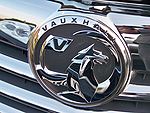
Commercial vehicles CurrentPastBedfordVauxhallConcept cars Divisions and subsidiaries People Other  Category ·
Category ·  CommonsCategories:
CommonsCategories:- Opel vehicles
- Front wheel drive vehicles
- Euro NCAP large family cars
- Liftbacks
- Sedans
- Station wagons
- Vehicles introduced in 1988
- Cars of Brazil
Wikimedia Foundation. 2010.

